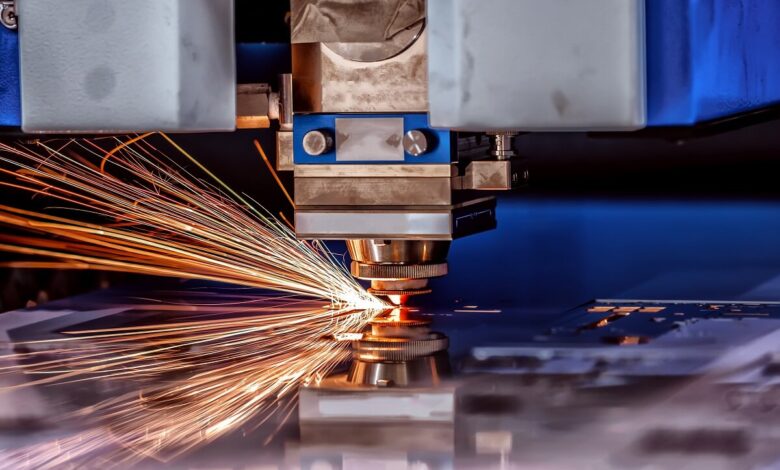Laser Marking and Types of Laser Marking Technologies

In today’s fast-paced manufacturing and industrial sectors, product identification plays a crucial role in quality control, traceability, and brand recognition. As technology continues to advance, traditional marking methods such as labels, inkjet printing, and engraving are being replaced by more efficient and precise solutions. One such solution that has gained significant popularity is laser marking. With its ability to create permanent and high-quality markings on a wide range of materials, laser marking has revolutionized the field of product identification.
Introduction to Laser Marking
Laser marking is a non-contact process that utilizes a high-powered laser beam to create marks or patterns on the surface of a material. The laser beam interacts with the material, causing a chemical or physical change that results in a permanent mark. The marking can be in the form of text, barcodes, serial numbers, logos, or intricate designs, depending on the requirements. Laser marking is widely used in industries such as automotive, electronics, aerospace, medical devices, and packaging.
Types of Laser Marking Technologies
There are several laser marking technologies available, each suited for specific applications:
CO2 Laser Marking
CO2 lasers use a carbon dioxide gas mixture to generate a laser beam. This technology is commonly used for marking organic materials like paper, wood, glass, plastics, and fabrics. It produces high-quality, permanent marks with excellent contrast.
Fiber Laser Marking
Fiber lasers employ a fiber optic cable to amplify the laser beam. They are highly versatile and can mark a wide range of materials, including metals, plastics, ceramics, and composites. Fiber laser marking offers superior precision, speed, and durability.
UV Laser Marking
UV lasers operate at a shorter wavelength, allowing them to mark materials with minimal heat-affected zones. This technology is suitable for sensitive materials like medical devices, semiconductors, and plastics. UV laser marking ensures high-resolution marks with exceptional accuracy.
Advantages of Laser Marking
Laser marking offers numerous advantages over traditional marking methods:
Permanent and Tamper-Proof Marks
Laser marks are highly durable and resistant to wear, chemicals, and environmental factors. They cannot be easily removed or altered, ensuring product authenticity and traceability.
High Precision and Clarity
Laser marking provides precise control over the marking process, resulting in sharp, clear, and legible marks. This is particularly important for small-scale markings like barcodes or serial numbers.
Non-Contact and Non-Destructive
Laser marking is a non-contact process, meaning it does not physically touch the material. This eliminates the risk of damage or deformation, making it suitable for delicate or sensitive components.
Versatility and Flexibility
Laser marking can be applied to a wide range of materials, including metals, plastics, glass, ceramics, and more. It accommodates various shapes, sizes, and surface finishes, making it a versatile solution for diverse marking needs.
Applications of Laser Marking
The applications of laser marking are vast and diverse:
Product Identification and Branding
Laser marking enables the permanent marking of product names, logos, and serial numbers. This helps in establishing brand identity, preventing counterfeiting, and ensuring traceability throughout the supply chain.
Medical Devices and Instruments
In the medical industry, laser marking is used for marking surgical instruments, implants, and medical devices. The marks provide crucial information like lot numbers, manufacturing dates, and sterilization indicators.
Automotive and Aerospace Components
Laser marking is extensively used for marking critical components in the automotive and aerospace industries. It allows for part identification, tracking, and quality control during the manufacturing and maintenance processes.
Electronics and Semiconductor Industry
Laser marking is vital in the electronics industry for marking PCBs (Printed Circuit Boards), ICs (Integrated Circuits), and other electronic components. It facilitates part traceability, warranty tracking, and anti-counterfeiting measures.
Final Words
Laser marking has emerged as a cutting-edge solution for product identification in various industries. Its ability to create permanent, high-quality marks with precision, durability, and versatility has made it an invaluable tool in manufacturing processes. As technology continues to advance, laser marking will likely evolve further, offering even more advanced features and capabilities to meet the ever-growing demands of the industrial world.





